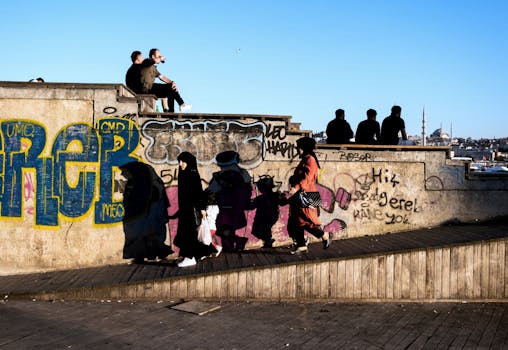
Cultural Fusion: Embracing Diversity in European Lifestyles by 2025
Cultural Fusion, the blending of different cultural practices, is becoming increasingly prevalent in European lifestyles. By 2025, it is expected that this trend will continue to shape the way Europeans live, work, and interact with one another.
Introduction to Cultural Fusion
Cultural fusion is a phenomenon where different cultural practices, traditions, and values come together to create something new and unique. This can occur through various means, such as migration, globalization, and technological advancements. In Europe, cultural fusion is happening at a rapid pace, with people from diverse backgrounds coming together to share their customs, food, music, and art.
Benefits of Cultural Fusion
The benefits of cultural fusion are numerous. It promotes diversity, inclusion, and understanding among people from different backgrounds. Cultural fusion also fosters creativity, innovation, and progress, as people from different cultures bring their unique perspectives and ideas to the table. Furthermore, cultural fusion helps to break down stereotypes and prejudices, promoting a more harmonious and cohesive society.
Examples of Cultural Fusion in Europe
There are many examples of cultural fusion in Europe. For instance, the city of London is a melting pot of cultures, with people from all over the world living and working together. The city’s food scene is a testament to this, with a wide range of international cuisines available, from Indian and Chinese to Italian and Mexican. Similarly, the city of Berlin is known for its vibrant arts and culture scene, which is heavily influenced by the city’s history of cultural fusion.
Challenges of Cultural Fusion
While cultural fusion has many benefits, it also poses some challenges. One of the main challenges is the potential for cultural homogenization, where one culture dominates over others. This can lead to the loss of traditional practices and customs, as well as the erosion of cultural identities. Additionally, cultural fusion can also lead to conflicts and misunderstandings between people from different cultural backgrounds.
Conclusion
In conclusion, cultural fusion is a powerful force that is shaping European lifestyles by 2025. While it poses some challenges, the benefits of cultural fusion far outweigh the drawbacks. By embracing diversity and promoting inclusion, Europeans can create a more harmonious and cohesive society, where people from all backgrounds can thrive and contribute to the rich cultural tapestry of the continent.






